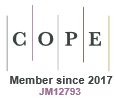Just Accepted
This article has been peer reviewed and accepted for publication. It is in production and has not been edited, so may differ from the final published form.
Adsorption-Based Removal of PFAS from Water: Mechanisms, Materials, and Future Perspective
Abstract
Per- and polyfluoroalkyl substances (PFAS), a large and chemically diverse group of synthetic fluorinated compounds that have been extensively used in industrial processes and consumer products, due to their remarkable thermal stability and resistance to degradation. However, their environmental persistence, bioaccumulation potential, and associated health risks are of growing global concern. This review critically and comprehensively synthesizes current knowledge on PFAS production, environmental dissemination, and management strategies. It explores major contamination sources and pathways, highlights their global distribution, and examines the evolving regulatory landscape. The review focuses on adsorption-based removal technologies, in-depth evaluating mechanisms of PFAS interactions with adsorbents such as activated carbon, biochar, metal-organic frameworks (MOFs), and ion-exchange resins. Comparative analysis of these materials considers their removal efficiencies, operational constraints, and energy demands. Furthermore, the review also identifies challenges and knowledge gaps, including the need for improved mechanistic understanding, standardized testing, and long-term performance data. Looking ahead, the article discusses future directions for PFAS remediation, including the development of advanced hybrid adsorbents, the integration of machine learning for material design, and the alignment of scientific innovation with policy. The review concludes with recommendations for harmonized regulations and interdisciplinary collaboration to support sustainable and effective PFAS mitigation efforts.
EN25053 Accepted 17 July 2025
© CSIRO 2025



